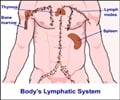- Harrison’s Principles of Internal Medicine 17th edition
- Czechowicz A and Weissman I. Purified Hematopoietic Stem Cell Transplantation - The Next Generation of Blood and Immune Replacement. Immunol Allergy Clin North Am. 2010; 30(2): 159–171.
About
Preferred Term - Hematopoietic stem cell transplantation
Bone marrow transplantation is a procedure wherein stem cells from bone marrow that produce various blood cells like red blood cells, white blood cells and platelets are injected into a recipient.
These stem cells are also referred to as hematopoietic stem cells. Nowadays, hematopoietic stem cells may also be obtained from peripheral blood after treatment with certain growth factors or from umbilical cord. Thus, the term “Hematopoietic stem cell transplantation” is now preferred to “Bone marrow transplantation” to include these other sources of hematopoietic stem cells.
The bone marrow is a soft, spongy portion within a bone. It contains immature cells called stem cells that have a continuous ability to produce different types of blood cells i.e. red blood cells, white blood cells and platelets. These are released into the blood stream. Bone marrow is of two types, red marrow and yellow marrow. In children, most of the marrow is red marrow and is rich in stem cells. In adults, however, a large portion of the bone marrow is converted into yellow marrow due to infiltration of fat cells. Red marrow in adults is usually restricted to a few bones like the hip bones, breast bone, ribs, shoulder blades, skull, backbone, and the ends of the arm and thigh bones.
Bone marrow transplantation is a procedure wherein bone marrow is injected into a recipient. The marrow may be obtained from a donor or it could have been harvested earlier from the patient. Accordingly, there are two types of bone marrow transplantation:
- Allogenic transplantation: In this procedure, stem cells are obtained from a donor and injected into the recipient.
- Autologous transplantation: In this procedure, stem cells are procured from the patient. The patient is then subjected to necessary treatment, and the stem cells are re-infused into the same patient.
Prior to bone marrow transplantation, the patient is treated with drugs to suppress immunity or treat the underlying condition. Bone marrow cells are normally obtained from the anterior and posterior iliac crests of the hip bones under general or spinal anesthesia. They are then filtered, processed and injected into a vein of the recipient through a large-bore central venous catheter.
Stem cells are usually present in small numbers in the blood stream. However, if the donor is injected with certain growth factors that promote growth of these cells, a large number of stem cells escape into the blood and can be directly harvested. In addition, the umbilical cord that is normally discarded post delivery contains stem cells and may be used for transplantation. The number of cells obtained from the umbilical cord is usually small; hence it is currently used for transplantation in children and young adults. Use of stem cells obtained from multiple cords may help mitigate this problem.
In the initial 2 to 4 weeks after
Rate of recovery of the patient following the transplantation depends upon the source of the stem cells, whether growth factors are used post –transplantation and whether drugs are used to suppress a graft-versus-host reaction.
Hematopoietic stem cell transplantation is used to treat a number of cancerous as well as non-cancerous conditions. The cancerous conditions include -
- Leukemia
- Lymphoma
- Multiple myeloma
- and Myelodysplasia
Non cancerous conditions include -
- Aplastic anemia
- Hemoglobinopathies
- Immunodeficiency disorders and conditions affecting blood present from birth may also be treated with hematopoietic stem cell transplantation.
Complications of hematopoietic red cell transplantation include graft failure, graft-versus-host disease, infections and complications caused by the immunosuppressive drugs.
 MEDINDIA
MEDINDIA

 Email
Email














